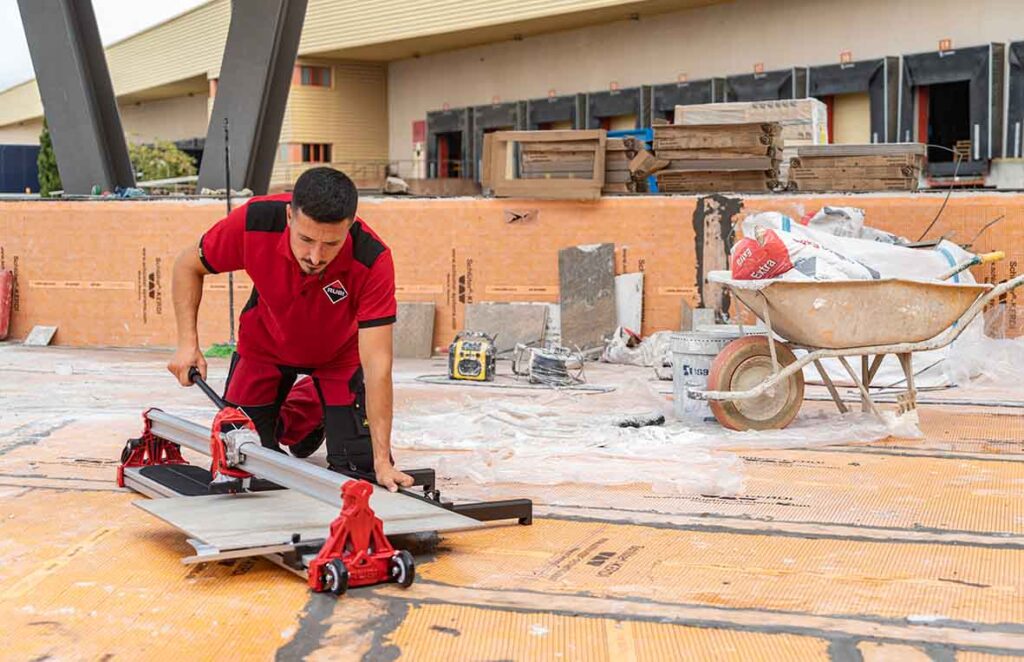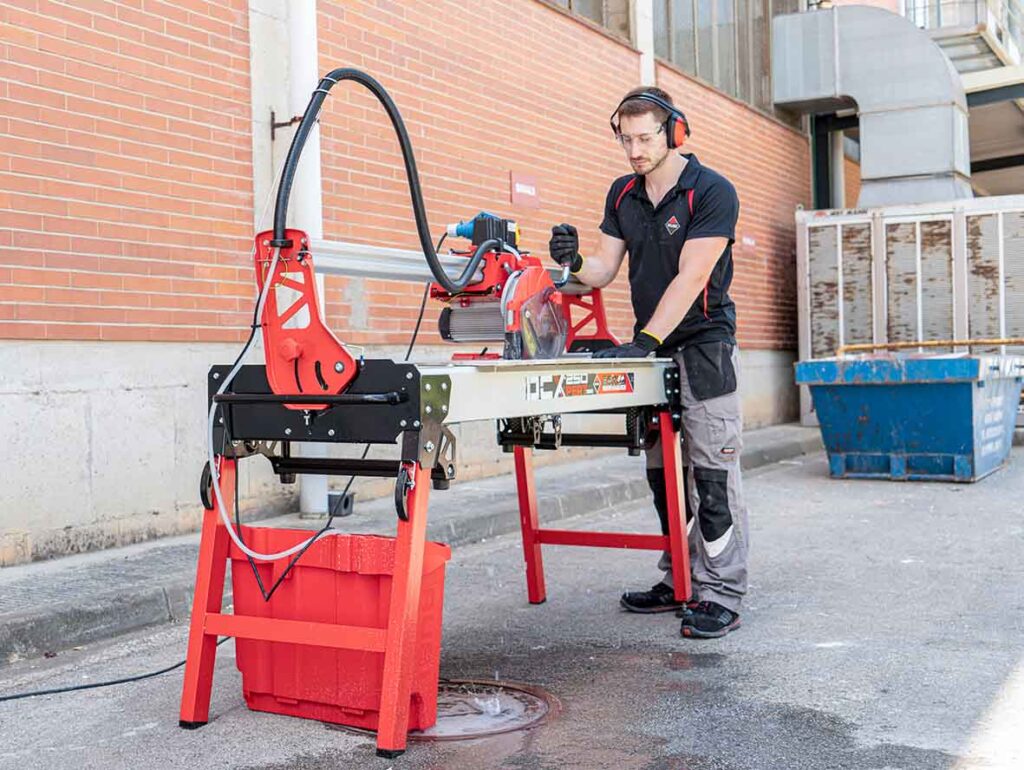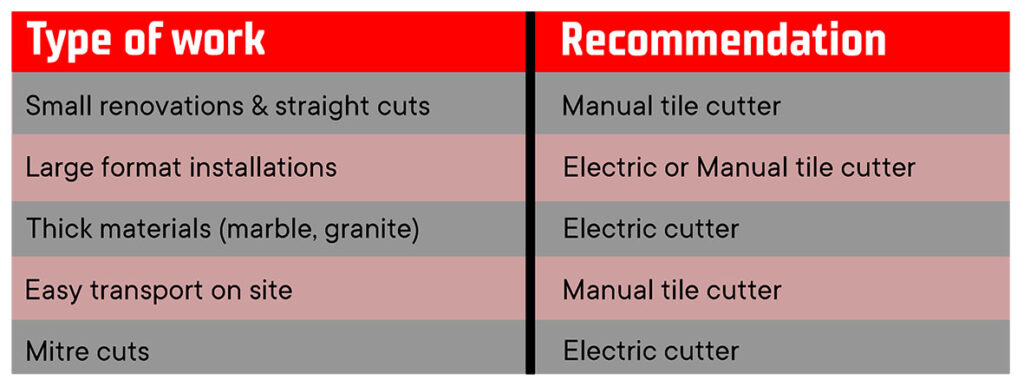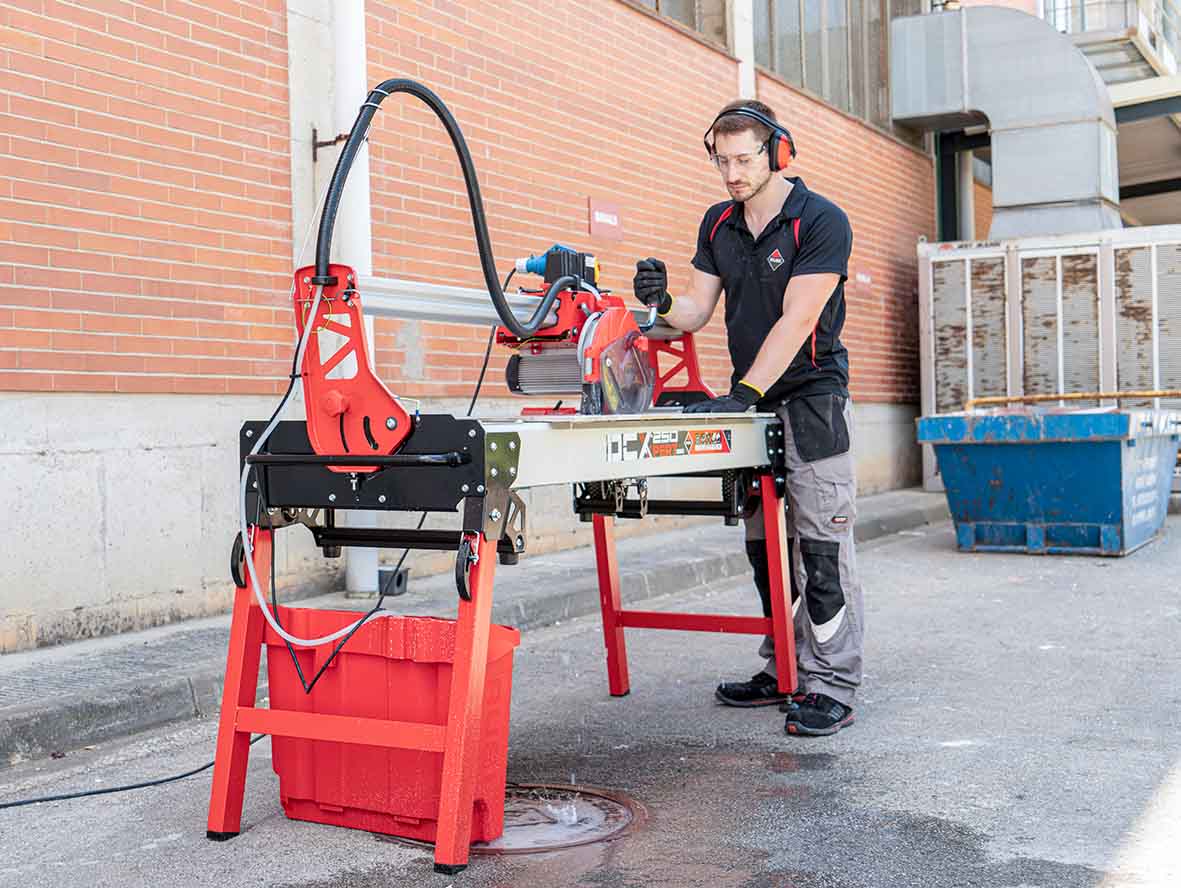If you’re learning how to tile, or just looking to sharpen your technique, choosing the right tile cutters can make or break your project. Manual or electric? It’s a decision that affects everything. From how clean your cuts are to how much dust ends up in your hair (or lungs).
In this guide, we’ll compare manual tile cutters vs electric tile cutters, explore their best applications, and help you figure out which one fits your workflow.


Manual cutters: precision and practicality with a manual tile cutter
Manual tile cutters are the unsung heroes of tiling. They’re fast, reliable, and don’t need electricity; perfect for job sites where the only power source is your own elbow grease.
Why choose a manual cutter?
- Less waste and dust: Fewer particles, less mess, and quieter operation.
- No electricity: Great for site work without a power source.
- Faster straight cuts: Ideal for repetitive, clean cuts.
- Minimal maintenance: A quick wipe and brush at the end of the day.

Limitations to consider:
- Special cuts: No mitres or bevels.
- Tile type dependence: Materials such as brick or concrete will need a diamond blade and an electric cutter.
Our recommendation on manual cutters: For standard tiles and porcelain, a manual tile cutter like the TX Max manual cutter is a robust and precise tool for demanding jobs.
- Separation force of up to 1200 kg
- Cuts up to 21 mm thick
- Cutting length up to 125 cm, diagonal cuts up to 85 x 85 cm (depending on the model)
It’s ideal for cutting tile, glazed stoneware, and porcelain stoneware, guaranteeing precision in each job..
Electric Tile Cutters: Power Meets Precision
Electric tile cutters are built for more demanding projects. If you’re working with thick materials or need complex cuts, this is your go-to.

WWhy go electric?
- Greater precision in complex cuts: Mitres and curves made easy.
- Suitable for hard materials: Porcelain, natural stone, bricks.
- Less physical effort: Let the motor do the work.
Things to keep in mind:
- Higher energy consumption: Needs electricity and sometimes water cooling.
- More maintenance: Clean the disc and water tank regularly.
- Weight and size: Less portable, needs space to operate.
Our recommendation on electric cutters: For precise cuts in hard materials and high-volume jobs, an electric cutter like the DL-125 is an excellent choice.
- High-performance 2.5hp motor
- Water cooling system to reduce disc wear and improve accuracy
- Lightweight with reinforced structure and side extension
- Cuts up to 50 mm thick, maximum cutting length of 135 cm
The DL-125 cutter is ideal for demanding projects that require clean, effortless cuts.
What Type of Tile Cutter to Choose?

Frequently Asked Questions About Tile Cutters
When deciding between manual tile cutters vs. electric cutters, choosing the right one can mean the difference between success or failure. So, to help you further, here are some frequently asked questions to help you choose the right RUBI product for you.
Which cutter to use for large-format porcelain tiles?
When the thickness is greater than 12 mm, an electric cutter with a water-cooled diamond disc is recommended. In this case, the TC-125 G2 is an ideal electric machine designed for cutting porcelain sheets and all types of ceramic tiles. It’s also suitable for natural stone and sintered stone.
The double dust reduction system allows the TC-125 G2 to be suitable for dry cutting (via vacuum connection) or wet cutting (via hose). It’s compatible with 125 and 115 mm blades, and can cut tiles up to 20–25 mm thick with a maximum cutting length of 320 cm (or more with supplementary guides).
Can manual cutters cut porcelain stoneware?
Yes, if you use a suitable model with a high-quality tungsten scoring wheel, like the EXTREME scoring wheel on the TZ cutter.
Is it necessary to use water in electric cutters?
It depends on the model and material. Generally, cutters with a water-cooling system extend blade life and reduce dust.
Tile cutters: Manual vs electric
Both manual and electric tile cutters have their place. The right choice depends on your materials, your workspace, and how fancy your cuts need to be. Still unsure? Drop your questions in the comments, we promise not to reply with “it depends” (unless it really does).



Post a comment